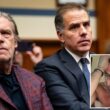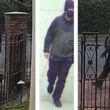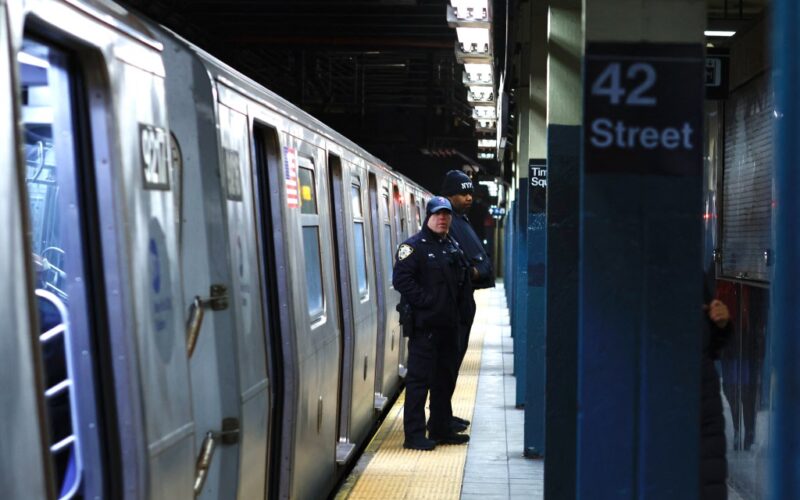Funding for Gov. Hochul’s State of the State pledge to put NYPD officers on every overnight subway train could be at risk amid a game of budgetary chicken between her administration and Mayor Adams’ City Hall — and the department has already begun scaling back police patrols, the Daily News has learned.
The overnight deployments have been, in part, bankrolled by $77 million that Hochul announced during her annual State of the State speech in January. Since then, a two-officer team has patrolled each subway train between 9 p.m. and 5 a.m. — part of an effort to increase visibility of law enforcement in the subterranean system.
But as that funding has begun to run down, sources tell The News the city and the state are now each waiting for the other to fund a continuation of the program for the rest of the year.
Hochul’s cash — which was matched by a $77 million contribution from the city — ultimately covered six months of overtime pay for more than 1,000 officers, including 300 additional tours of duty for overnight subway patrols.
Millions of dollars of that funding still exists. But with no commitment of more funding on the horizon, police sources told The News that they’ve scaled back to 200 patrols a night.
An NYPD spokesman said the reduction in patrols would be countered by a reliance on targeted enforcement or “precision policing.”
“We’ll continue making the subways safer by using our data-driven approach to deploy officers to the areas we know are problematic — ensuring cops are on the right trains, at the right stations and at the right times,” the department said in a statement.
While some funding for the patrol surge remains, state and city sources said this week there’s no clear agreement over how that pot gets replenished.
A city government source with knowledge of the matter, who spoke on condition of anonymity, said there has been friction between the state and the Adams administration over how the overnight patrols should be bankrolled going forward.
The source said there’s a sentiment in city government that the state is trying to shortchange the city.
Sources at the state level countered that the expectation had always been the city — which runs and funds most components of the NYPD — would foot the bill after the initial state dollars ran dry.
Mayoral spokeswoman Kayla Mamelak confirmed the state hasn’t funded a continuation of the subway deployments, but did not comment on the decision to decrease the patrols in the meantime.
“We are grateful for the state’s partnership over the first six months of the year, and while they have not committed to additional funding to continue surging officers onto subway trains, we remain focused on strategically deploying resources based on where the data shows they’re needed most to ensure New Yorkers are not only safe, but feel safe,” she said.
Hochul spokesman Sean Butler said the governor remains committed to the patrols.
“Public safety is Gov. Hochul’s top priority, which is why she deployed additional law enforcement and National Guard personnel into our subway system to keep riders and transit workers safe,” he said. “This strategy has succeeded in reducing transit crime and the governor is committed to maintaining the NYPD presence on overnight trains.”
Butler confirmed that the state’s initial $77 million investment in the patrols has not yet been exhausted.
Word of the sunsetting funding comes as Adams is mounting a difficult independent bid for reelection, campaigning on a message about how the city has become safer under his administration.
In making that case, the mayor has touted how some crime categories have trended downward under his leadership, including underground.
The NYPD said reports of major crimes have fallen during the overnight patrols.
From Jan. 31 through this week, robberies were down 14%, and unprovoked felony assaults were down 33%, a department spokesman said.
Originally Published:








